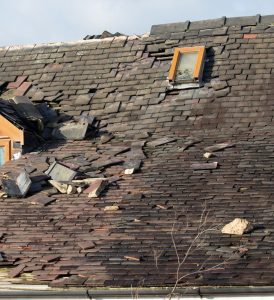The importance of roofing warranties
A roof is a significant investment in your home, and it’s essential to protect it with a warranty. A roofing warranty offers peace of mind, protecting you from the high costs of unexpected repairs or replacements. A good warranty will cover both materials and workmanship and provide clear guidelines for the coverage and limitations.
This blog aims to educate homeowners on the different types of roofing warranties, key terms to understand, how to evaluate a warranty, tips for protecting your warranty, and what to do in case of a warranty claim. By understanding these topics, you can make informed decisions when selecting a roofing warranty, protecting your home and investment.
Types of Roofing Warranties
Material or product warranties
A material or product warranty is a type of roofing warranty that covers the roofing material itself. These warranties are typically offered by the manufacturer and will outline the terms and conditions of coverage, including limitations and exclusions. Most material warranties range from 20 to 50 years, and some manufacturers offer longer warranties.
Workmanship warranties
A workmanship warranty is a type of roofing warranty that covers the installation of the roof. These warranties are typically offered by the contractor and will outline the terms and conditions of coverage, including limitations and exclusions. Workmanship warranties are usually shorter than material warranties, ranging from one to ten years.
Key Terms to Understand
Prorated vs. non-prorated warranties
A prorated warranty will provide a refund or replacement based on the remaining value of the warranty, while a non-prorated warranty provides full coverage for the entire warranty period. Prorated warranties can be more complicated to understand and may not provide as much protection as a non-prorated warranty.
Transferability of warranties
A transferable warranty allows the warranty to be transferred to a new homeowner if you decide to sell your home. Non-transferable warranties are tied to the original owner and are not transferable. A transferable warranty can add value to your home and offer added protection for future buyers.
Exclusions and limitations
Exclusions and limitations are conditions that may prevent the warranty from providing coverage. These conditions may include improper installation, lack of maintenance, or damage caused by natural disasters. It’s essential to understand these exclusions and limitations to ensure your warranty remains valid.
How to Evaluate a Roofing Warranty
Questions to ask a roofing company
When evaluating a roofing warranty, it’s essential to ask the roofing company questions about the coverage, limitations, and exclusions. Ask the company to explain any confusing terms or conditions and to provide a copy of the warranty to review.
Comparing warranties from different manufacturers and contractors
Comparing warranties from different manufacturers and contractors can help you understand the differences in coverage and limitations. Look for warranties that offer comprehensive coverage for both materials and workmanship and have clear terms and conditions.
Understanding the fine print
Understanding the fine print of the warranty is crucial to ensuring you have the protection you need. Review the warranty carefully and ask questions about any terms or conditions that are unclear.
Tips for Protecting Your Roofing Warranty
Proper roof maintenance
Proper roof maintenance is essential to protecting your warranty. Regular inspections, cleaning, and repairs can prevent damage and ensure your roof remains in good condition. Follow the manufacturer’s recommendations for maintenance to ensure your warranty remains valid.
Documenting repairs and inspections
Documenting repairs and inspections can help you keep track of the condition of your roof and provide proof of maintenance if needed for a warranty claim. Keep a record of all repairs, inspections, and maintenance to ensure you have the documentation you need in case of a warranty claim.
Ensuring warranty compliance
Ensure warranty compliance by following the terms and conditions of the warranty. This includes proper installation, maintenance, and repairs by qualified professionals. Failure to comply with the terms and conditions of the warranty may void the coverage.
What to Do in Case of a Warranty Claim
Steps to take when filing a claim
If you need to file a warranty claim, contact the manufacturer or contractor who provided the warranty. Provide documentation of the issue, including photographs and any maintenance records. The company will review your claim and determine if it is covered under the warranty.
Navigating the claims process
Navigating the claims process can be complicated, and it’s essential to follow the instructions provided by the warranty provider. If your claim is denied, ask for an explanation and review the terms and conditions of the warranty to ensure you understand the reason for the denial.
Handling disputes and resolutions
In some cases, disputes may arise between the homeowner and the warranty provider. If this happens, it’s essential to try to resolve the issue through negotiation or mediation. If a resolution cannot be reached, legal action may be necessary.
Conclusion
The value of understanding roofing warranties
Understanding roofing warranties is crucial to protecting your home and investment. A good warranty can provide peace of mind and protect you from unexpected costs. By understanding the different types of warranties, key terms, and how to evaluate a warranty, you can make informed decisions when selecting a warranty.
Making informed decisions for your home and investment
Making informed decisions for your home and investment is essential. By following the tips for protecting your warranty and knowing what to do in case of a warranty claim, you can ensure that your warranty remains valid and that you have the protection you need.




